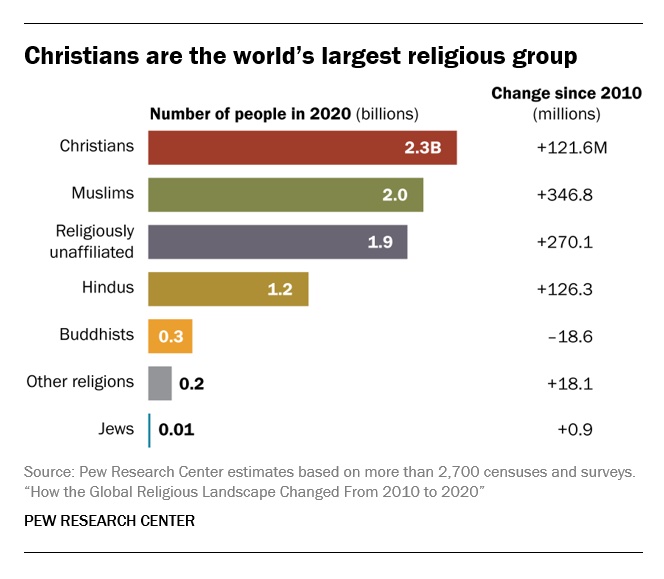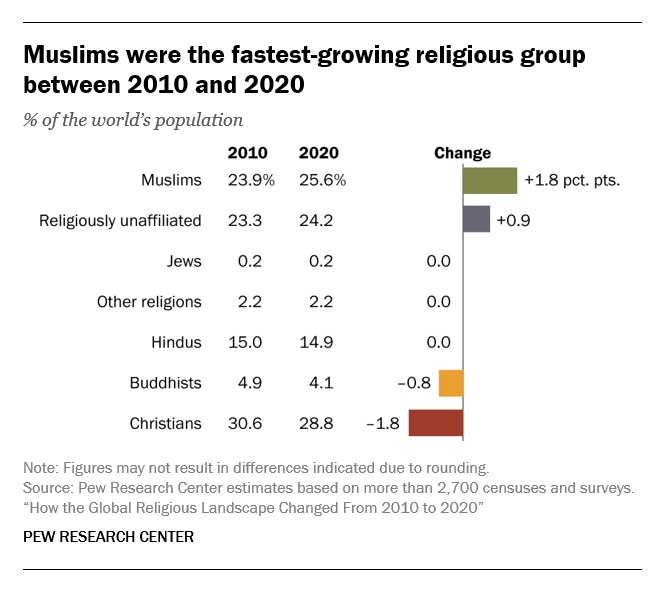Uncategorized
The Dominican Republic was a haven for Jews fleeing the Nazis. A museum project could tell that story.
SOSUA, Dominican Republic (JTA) — Sitting inside a small wood-frame shul just around the corner from Playa Alicia, where tourists sip rum punch while watching catamarans glide by, Joe Benjamin recounted one of the most uplifting but often forgotten stories of Jewish survival during the Holocaust.
“I was bar mitzvahed right here,” he said, pointing to a podium at the front of the sanctuary in La Sinagoga de Sosua. It was built in the early 1940s to meet the spiritual needs of about 750 German and Austrian Jews.
At the time, the Dominican Republic was the only country in the world that offered asylum to large numbers of Jewish refugees, earning the moniker “tropical Zion.”
Benjamin, 82, is president of the Jewish community of Sosua and one of only four surviving second-generation Jews remaining in this touristy beach town on the northern coast of the Dominican Republic. His parents were part of the unconventional colony of Jewish immigrants who established an agricultural settlement between 1940-47 on an abandoned banana plantation overlooking the Atlantic Ocean.
“When I talk about that, I get goosebumps,” Benjamin said. “This is a distinction that the Dominican Republic has. It was the only country that opened its doors to Jews.”
Joe Benjamin, president of the Jewish Community of Sosua, inside the sanctuary of La Sinagoga. (Dan Fellner)
At the 1938 Evian Conference in France, attended by representatives of 32 countries to address the problem of German and Austrian Jewish refugees wanting to flee Nazi persecution, the Dominican Republic announced it would accept up to 100,000 Jewish refugees. About 5,000 visas were issued but fewer than 1,000 Jews ultimately were able to reach the country, which is located on the same island as Haiti, about 800 miles southeast of Miami.
Benjamin was born in 1941 in Shanghai, the only other place besides the Dominican Republic that accepted large numbers of Jewish refugees during the Holocaust. Shanghai, then a divided city not under the control of a single government, did not require a visa to enter. About 20,000 Jewish refugees immigrated there, including Benjamin’s parents, who fled Nazi Germany in 1939.
In 1947, with a civil war raging in China, Benjamin’s father realized the country “was getting a little difficult” and looked for another place to raise his two children.
“I think my father read it in a newspaper – there was a Jewish refugee colony in the Dominican Republic,” he says. “My father had no idea where that was, but he said, ‘I’m going there.’”
Benjamin’s family took a ship from China to San Francisco, a train to Miami, and then flew into Santo Domingo, the Dominican Republic’s capital city. At that time, the city was officially called Ciudad Trujillo after the country’s dictator, Generalissimo Rafael Trujillo, who ruled the Dominican Republic from 1930 until his assassination in 1961.
Photos of some of the 750 Jewish refugees who settled in Sosua in the 1940s on display at the Gregorio Luperon International Airport in Puerto Plata, Dominican Republic. (Dan Fellner)
Historians suggest the Dominican dictator’s motives in accepting large numbers of Jewish refugees at a time when so many other countries — including the United States, Canada and the United Kingdom — turned their backs were fueled more by opportunism than altruism. It’s believed that Trujillo wanted to improve his reputation on the world stage following the 1937 massacre of an estimated 20,000 Black Haitians by Dominican troops. Furthermore, Trujillo liked the idea of allowing a crop of mostly educated immigrants who would “whiten” the country’s population.
“He was a cruel dictator,” Benjamin said of Trujillo. “But it’s not for me to judge. Because for us, he saved our lives. If you’re drowning and someone throws you a rope, you hold on to it. You don’t start asking his motive. You just hold on.”
In 1947, Benjamin was among the last group of Jewish refugees to arrive in Sosua, one of about 10 families known by the other colonists as the “Shanghai group.” The Sosua settlement was run by an organization called the Dominican Republic Settlement Association (DORSA) that was funded by the American Jewish Joint Distribution Committee in New York.
“DORSA would give you 10 cows, a mule, a horse and a cart,” said Benjamin. “My father by profession was a cabinet-maker. He thought he was going to do that here. But there was no market for that. So he dedicated himself to farming.”
Benjamin said conditions in Sosua were “primitive” and a difficult transition for many settlers who had been city-dwellers in Europe. Still, he spoke fondly of a childhood in which he was relatively insulated from the horrors that befell so many other Jewish children his age.
“We had enough to eat,” he says. “We enjoyed the beach. And I went to a Jewish school.”
La Sinagoga de Sosua in the Dominican Republic served the spiritual needs of the Jewish refugees who found a safe haven in Sosua during the Holocaust. It’s now open only for the high holidays. (Dan Fellner)
The school, originally called Escuela Cristobal Colon, opened in 1940 in a barracks and was attended by Jewish children as well as the children of Dominican farm workers. The school still exists and is now called the Colegio Luis Hess, named after Luis Hess, one of the Jewish settlers. Hess taught at the school for 33 years and lived in Sosua until his death in 2010 at the age of 101.
While the children attended school, men worked on farms and women cooked dinner for their families, who ate communal style. Beds were lined with mosquito netting to prevent malaria. As men greatly outnumbered women — Trujillo did not allow single Jewish women to enter the country — intermarriage was common.
Over time, the agriculture venture failed and DORSA instead decided to promote a beef and dairy cooperative, Productos Sosua, which ultimately proved successful.
After finishing high school, Benjamin moved to Pittsburgh to attend college (he’s an engineer who once built and flew his own airplane), got married and started a family. After 17 years in the United States, he decided in 1976 to return to the Dominican Republic, where he became an executive with Productos Sosua. He worked there until he retired in 2004, when the firm was sold to a Mexican company.
“All my life I talked about Sosua as my home,” he said. “I like it here. Everybody knows me.”
A street mural recognizes Sosua’s Jewish history on the main road connecting Sosua with Puerto Plata on the north coast of the Dominican Republic. (Dan Fellner)
Today, Sosua is vastly changed from the sleepy town in which Benjamin was raised. In 1979, an international airport opened in Puerto Plata, just a 15-minute drive to the west. Sosua morphed into a congested tourist destination known for its golden-sand beaches and water sports. It also became a hub of the Dominican sex tourism industry.
Most of Sosua’s Jewish population immigrated to the United States by the early 1980s. Benjamin estimates that only 30-40 Jews remain in Sosua, most of whom are not religiously observant. As a result, the synagogue hasn’t been able to financially sustain a permanent rabbi for more than 20 years. Services are held only on the high holidays, when a rabbi is flown in from Miami.
Benjamin says a group of seven Jews chips in about $2,500 a month to pay for security and other operating expenses.
“It’s very hard to get the Jews here to pay,” he said. “When we bring in the rabbi, we try to charge something. But we don’t get any people if we charge.”
Next to the synagogue is a small museum called the Museo Judio de Sosua, which offers a window into the town’s Jewish roots. Five years ago, the U.S. Embassy in Santo Domingo donated $80,000 to the museum to preserve and digitize its archives. However, the museum, which is badly in need of repairs, has been closed for the past year.
The Museo Judio de Sosua, which tells the story of the Jewish refugees who found a safe haven in the Dominican Republic during the Holocaust. The museum is closed while the community waits for funding to reopen it. (Dan Fellner)
Benjamin has been in discussions with the Dominican government in hopes it will soon finance a major renovation of the museum that would include an exhibition hall big enough to accommodate 100 people for events. Benjamin says he is optimistic the project, which has a price-tag approaching $1 million, will be green-lighted by the government.
“They are very positive about it because it could become a tourist attraction,” he says, noting that Puerto Plata and nearby Amber Cove have become popular port-stops on Caribbean cruises originating in Florida. “If it comes to fruition, it will be in the next year. Because if they don’t do it by then, the government changes. And the next government never continues what the previous government started.”
Otherwise, there are only a few remnants of Jewish life in Sosua for visitors to see. In Parque Mirador overlooking the Atlantic, there is a white cement-block star of David, built to honor the Jewish refugees. About 70 Jews, including Benjamin’s parents, are buried in a Jewish cemetery about a five-minute drive south of the synagogue.
The main street connecting Sosua with Puerto Plata has a street mural depicting the town’s history that features a large star of David right above a scuba-diver. And two of the most prominent streets in Sosua — Dr. Rosen and David Stern — still bear the names of two of the colony’s Jewish founders.
Dr. Rosen Street in downtown Sosua is named after Joseph Rosen, one of the founders of the Dominican Republic Settlement Association. (Dan Fellner)
There had been an exhibition about Sosua’s Jewish colony at the Museum of Jewish Heritage in New York but it closed several years ago. All the more reason, Benjamin says, that the Sosua museum reopens as soon as possible so that the story of the Jews who found a Caribbean cocoon to ride out the Holocaust isn’t forgotten.
“Look at what’s happening in the world — there is a rise in antisemitism,” he said. “It’s very important that our history is documented. It will also be a place where Dominican schoolchildren can come and learn about Judaism.”
With the museum closed, the only place in the area to see photos of the Jewish settlers on public display is the departure lounge in Puerto Plata’s airport. Next to a Dominican band serenading travelers with meringue music, there is a display of pictures showing the colonists riding horses, tilling the fields, attending school and praying in La Sinagoga.
“When they came here, the Jews found no antisemitism at all in this country,” said Benjamin. “They were as free as anybody. They had a wonderful life.”
—
The post The Dominican Republic was a haven for Jews fleeing the Nazis. A museum project could tell that story. appeared first on Jewish Telegraphic Agency.
Uncategorized
How the Global Religious Landscape Changed from 2010 to 2020

Muslims grew fastest; Christians lagged behind global population increase
• Christians are the world’s largest religious group, at 28.8% of the global population. They are a majority everywhere except the Asia-Pacific and Middle East-North Africa regions. Sub-Saharan Africa has surpassed Europe in having the largest number of Christians. But Christians are shrinking as a share of the global population, as millions of Christians “switch” out of religion to become religiously unaffiliated.

• Muslims are the world’s second-largest religious group (25.6% of the world’s population) and the fastest-growing major religion, largely due to Muslims’ relatively young age structure and high fertility rate. They make up the vast majority of the population in the Middle East-North Africa region. In all other regions, Muslims are a religious minority, including in the Asia-Pacific region (which is home to the greatest number of Muslims).

• The religiously unaffiliated population is the world’s third-largest religious category (24.2% of the global population), after Christians and Muslims. Between 2010 and 2020, religiously unaffiliated people grew more than any group except Muslims, despite their demographic disadvantages of an older age structure and relatively low fertility. The unaffiliated made up a majority of the population in 10 countries and territories in 2020, up from seven a decade earlier.
• Hindus are the fourth-largest religious category (14.9% of the world’s population), after Christians, Muslims and religiously unaffiliated people. Most (99%) live in the Asia-Pacific region; 95% of all Hindus live in India alone. Between 2010 and 2020, Hindus remained a stable share of the world’s population because their fertility resembles the global average, and surveys indicate that switching out of or into Hinduism is rare.
• Buddhists (4.1% of the world’s population) are the only group in this report whose number declined worldwide between 2010 and 2020. This was due both to religious disaffiliation among Buddhists in East Asia and to a relatively low birth rate among Buddhists, who tend to live in countries with older populations. Most of the world’s Buddhists (98%) reside in the Asia-Pacific region, the birthplace of Buddhism.
• Jews, the smallest religious group analyzed separately in this report (0.2% of the world’s population), lagged behind global population growth between 2010 and 2020 – despite having fertility rates on par with the global average – due to their older age structure. Most Jews live either in North America (primarily in the United States) or in the Middle East-North Africa region (almost exclusively in Israel).
These are among the key findings of a Pew Research Center analysis of more than 2,700 censuses and surveys, including census data releases that were delayed due to the coronavirus pandemic. This report is part of the Pew-Templeton Global Religious Futures project, which analyzes global religious change and its impact on societies around the world. Funding for the Global Religious Futures project comes from The Pew Charitable Trusts and the John Templeton Foundation.
Uncategorized
Antisemitism in some unlikely places in America

By HENRY SREBRNIK Antisemitism flourishes in a place where few might expect to confront it – medical schools and among doctors. It affects Jews, I think, more emotionally than Judeophobia in other fields.
Medicine has long been a Jewish profession with a history going back centuries. We all know the jokes about “my son – now also my daughter – the doctor.” Physicians take the Hippocratic Oath to heal the sick, regardless of their ethnicity or religion. When we are ill doctors often become the people who save us from debilitating illness and even death. So this is all the more shocking.
Yes, in earlier periods there were medical schools with quotas and hospitals who refused or limited the number of Jews they allowed to be affiliated with them. It’s why we built Jewish hospitals and practices. And of course, we all shudder at the history of Nazi doctors and euthanasia in Germany and in the concentration camps of Europe. But all this – so we thought – was a thing of a dark past. Yet now it has made a comeback, along with many other horrors we assume might never reappear.
Since the Hamas attack on Israel on October 7, 2023, there has been a resurgence of antisemitism, also noticeable in the world of healthcare. This is not just a Canadian issue. Two articles on the Jewish website Tablet, published Nov. 21, 2023, and May 18, 2025, spoke to this problem in American medicine as well, referencing a study by Ian Kingsbury and Jay P. Greene of Do No Harm, a health care advocacy group, based on data amassed by the organization Stop Antisemitism. They identified a wave of open Jew-hatred by medical professionals, medical schools, and professional associations, often driven by foreign-trained doctors importing the Jew-hatred of their native countries, suggesting “that a field entrusted with healing is becoming a licensed purveyor of hatred.”
Activists from Doctors Against Genocide, American Palestinian Women’s Association, and CODEPINK held a demonstration calling for an immediate cease-fire in Gaza at the Hart Senate Office Building in Washington, D.C., Nov. 16, 2023, almost as soon as the war began. A doctor in Tampa took to social media to post a Palestinian flag with the caption “about time!!!” The medical director of a cancer centre in Dearborn, Michigan, posted on social media: “What a beautiful morning. What a beautiful day.” Even in New York, a physician commented on Instagram that “Zionist settlers” got “a taste of their own medicine.” A Boston-based dentist was filmed ripping down posters of Israeli victims and a professor at the University of Pennsylvania Perelman School of Medicine did the same. Almost three-quarters of American medical associations felt the need to speak out on the war in Ukraine but almost three-quarters had nothing to say about the war in Israel.
Antisemitism in academic medical centres is fostering noxious environments which deprive Jewish healthcare professionals of their civil right to work in spaces free from discrimination and hate, according to a study by the Data & Analytics Department of StandWithUs, an international, non-partisan education organization that supports Israel and fights antisemitism.
“Academia today is increasingly cultivating an environment which is hostile to Jews, as well as members of other religious and ethnic groups,” StandWithUs director of data and analytics, and study co-author, Alexandra Fishman, said on May 5 in a press release. “Academic institutions should be upholding the integrity of scholarship, prioritizing civil discourse, rather than allowing bias or personal agendas to guide academic culture.”
The study, “Antisemitism in American Healthcare: The Role of Workplace Environment,” included survey data showing that 62.8 per cent of Jewish healthcare professionals employed by campus-based medical centres reported experiencing antisemitism, a far higher rate than those working in private practice and community hospitals. Fueling the rise in hate, it added, were repeated failures of DEI (diversity, equity, and inclusion) initiatives to educate workers about antisemitism, increasing, the report said, the likelihood of antisemitic activity.
“When administrators and colleagues understand what antisemitism looks like, it clearly correlates with less antisemitism in the workplace,” co-author and Yeshiva University professor Dr. Charles Auerbach reported. “Recognition is a powerful tool — institutions that foster awareness create safer, more inclusive environments for everyone.”
Last December, the Data & Analytics Department also published a study which found that nearly 40 per cent of Jewish American health-care professionals have encountered antisemitism in the workplace, either as witnesses or victims. The study included a survey of 645 Jewish health workers, a substantial number of whom said they were subject to “social and professional isolation.” The problem left more than one quarter of the survey cohort, 26.4 per cent, “feeling unsafe or threatened.”
The official journal of the Alliance for Academic Internal Medicine concurs. According to “The Moral Imperative of Countering Antisemitism in US Medicine – A Way Forward,” by Hedy S. Wald and Steven Roth, published in the October 2024 issue of the American Journal of Medicine, increased antisemitism in the United States has created a hostile learning and practice environment in medical settings. This includes instances of antisemitic behaviour and the use of antisemitic symbols at medical school commencements.
Examples of its impact upon medicine include medical students’ social media postings claiming that Jews wield disproportionate power, antisemitic slogans at the University of California, Los Angeles (UCLA) David Geffen School of Medicine, antisemitic graffiti at the University of California, San Francisco (UCSF) Cancer Centre, Jewish medical students’ exposure to demonization of Israel diatribes and rationalizing terrorism; and faculty, including a professor of medicine at UCSF, posting antisemitic tropes and derogatory comments about Jewish health care professionals. Jewish medical students’ fears of retribution, should they speak out, have been reported. “Our recent unpublished survey of Jewish physicians and trainees demonstrated a twofold increase from 40% to 88% for those who experienced antisemitism prior to vs after October 7,” they stated.
In some schools, Jewish faculty are speaking out. In February, the Jewish Faculty Resilience Group at UCLA accused the institution in an open letter of “ignoring” antisemitism at the School of Medicine, charging that its indifference to the matter “continues to encourage more antisemitism.” It added that discrimination at the medical school has caused demonstrable harm to Jewish students and faculty. Student clubs, it said, are denied recognition for arbitrary reasons; Jewish faculty whose ethnic backgrounds were previously unknown are purged from the payrolls upon being identified as Jews; and anyone who refuses to participate in anti-Zionist events is “intimidated” and pressured.
Given these findings, many American physicians are worried not only as Jewish doctors and professionals, but for Jewish patients who are more than ever concerned with whom they’re meeting. Can we really conceive of a future where you’re not sure if “the doctor will hate you now?”
Henry Srebrnik is a professor of political science at the University of Prince Edward Island.
Uncategorized
The 2025 Toronto Walk (and talk ) for Israel

By GERRY POSNER There are walks and then there are walks. The Toronto UJA Walk for Israel on May 25, 2025 was one of a kind, at least as far as Canada and Jews are concerned. The number of people present was estimated to be 56,000 people or 112,000 total shoes. (How they get to that number is bewildering to me, since there is no one counting). This was 6,000 more than last year. Whether it is true or not, take it from me, it was packed. The synagogues in Canada should be so fortunate to get those numbers in total on High Holidays. The picture here gives you a sense of the size of the crowd.

This was my first walk in Toronto for Israel and I was with my granddaughter, Samantha Pyzer (not to forget her two friends whom she managed to meet at the site, no small feat, even with iPhones as aids). The official proceedings began at 9:00 a.m. and the walk at 10:00 a.m. There was entertainment to begin with, also along the way, and at the finish as well. The finish line this year was the Prosserman Centre or the JCC as it often called. The walk itself was perhaps 4 kilometres – not very long, but the walking was slow, especially at the beginning. There were lots of strollers, even baby carriages, though I did not see any wheelchairs. All ages participated on this walk. I figured, based on what I could see on the faces of people all around me that, although I was not the oldest one on the walk, I bet I made the top 100 – more likely the top 20.
What was a highlight for me was the number of Winnipeggers I met, both past and present. Connecting with them seemed to be much like a fluke. No doubt, I missed la lot of them, but I saw, in no particular order (I could not recall the order if my life depended on it): Alta Sigesmund, (who was, a long time ago, my daughter Amira’s teacher), Marni Samphir, Karla Berbrayer and her husband Dr. Allan Kraut and family. Then, when Samantha and I made it to the end and sat down to eat, I struck up a conversation with a woman unknown to me and as we chatted, she confirmed her former Winnipeg status as a sister-in- law to David Devere, as in Betty Shwemer, the sister of Cecile Devere. I also chanced upon Terri Cherniack, only because I paused for a moment and she spotted me. As we closed in near the finish, I met ( hey were on their way back), Earl and Suzanne Golden and son Matthew, as well as Daniel Glazerman. That stop caused me to lose my granddaughter and her pals. Try finding them amid the noise and size of the crowd – but I pulled it off.

As I was in line to get food, I started chatting with a guy in the vicinity of my age. I dropped the Winnipeg link and the floodgates opened with “ Did I know Jack and Joanie Rusen?” So that was an interesting few minutes. And I was not too terribly surprised to come across some of my Pickleball family. All of these meetings, along with spotting some of my sister’s family and other cousins, were carried on with the sound of the shofar as we moved along the way. In short, this was a happening. Merchants selling a variety of products, many of them Israeli based, were in evidence and, of course, the day could not have ended without the laying of tefillin, aided by Chabad, who have perfected the procedure to take less than a minute. See the photo. Chabad had a willing audience.
Aside from the joy of sharing this experience with my granddaughter, the very presence of all these Jews gathered together for a common reason made this day very special to me. However, there was a downside to the day. The downside was that, as we began to walk back to our car there was no other way I could figure out how to return when the rains came and came. While we walked faster, we were impeded by pouring rain and puddles. But Samantha wanted to persevere, as did I. We made it, but were drenched. My runners are still drying out as I write this two days later.
What with being surrounded by 56,000 people, the noise, the slow walking, and the rain, I can still say the day was a real highlight for me – one of the better moments since our arrival in Toronto in 2012. As well as the photos we took along the way, I have the reminder of the day, courtesy of the UJA, as evidenced from the photo. It was not just the walk, but the talk that accompanied the walk that made it so worthwhile for me. I would do it again, minus the rain.
